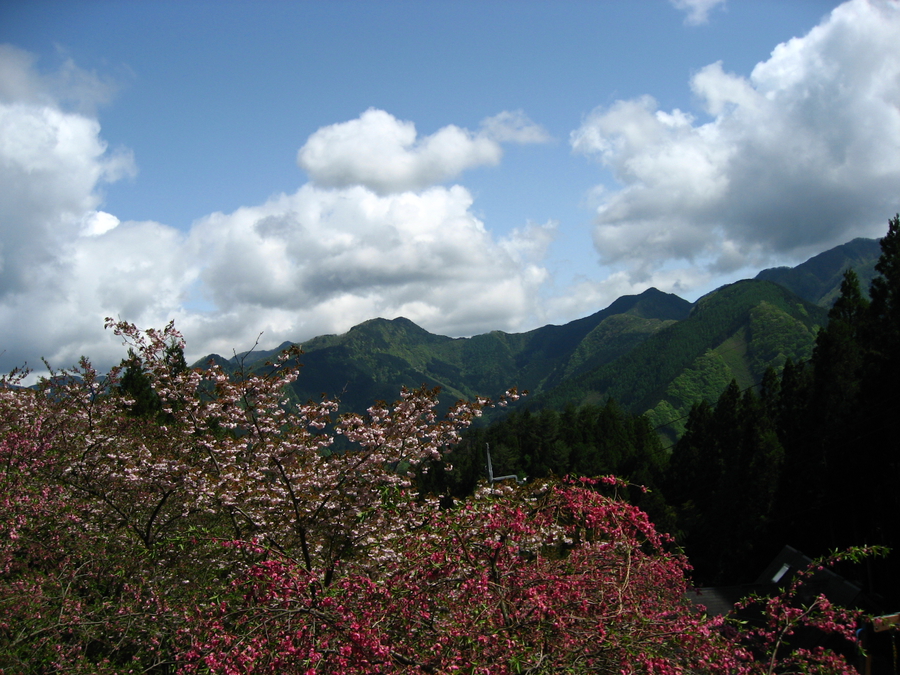It’s been a round 10 years of hiking – and it all began in 2008 with a short hike in Japan, in the mountains just outside of Tokyo, during one of the aptly named holiday periods called Golden Week. Exactly 10 years ago to the date, I went on my first serious overnight hike in the Chichibu-Tama National Park, now known as the Chichibu-Tama-Kai National Park (秩父多摩甲斐国立公園 ). I didn’t know it at the time, but for me this hike was to become the beginning of a journey of discovering the natural beauty of many different areas around the world through hiking and travelling, always looking to immerse myself in nature even in small ways in the most unlikely of places (like big cities or hot touristy spots!).
To celebrate this personal anniversary I thought I’d share some memories and photos of that first hike on the blog to reminisce, and, as always, in the hope that my experience and impressions would be useful in your search for an exciting new hike should you happen to be in the Tokyo area and longing to stretch your legs (-:
the golden week season
This adventure took place during Golden Week; so, to set the atmosphere right from the start, what exactly is Golden Week? For those who are not familiar with Japanese holidays, Golden Week is a commonly used colloquial term for the week in late April and early May every year, when a few Japanese national holidays that fall close together in time can be combined to take an effectively contiguous week-long holiday. In reality, Golden Week can be an extremely busy period as everyone is rushing around to take advantage and do some travel, either to visit family and friends, or just to relax. The majority of people tend to stay and travel in Japan too (vs. going abroad), so great numbers of people moving in all possible directions are indeed involved!

Preferring to avoid stressful long hours crowded in one of the many possible modes of transportation, we had decided to take our chances and go on a nearby hike instead (near Tokyo that is, where I used to live at the time). I took some time to browse through the excellent “Hiking in Japan” Lonely travel guide (published in 2001, it’s an oldie but goodie with lots of well structured in-depth information). What attracted my attention immediately as an accessible option with varied terrain was the huge yet inviting expanse of the Chichibu-Tama National Park.
tokyo hiking – the chichibu-tama national park
The park area itself is, like most of Japan, mountainous, featuring “rugged” mountains with sharp increases and drops in altitude, which are quite different from the European Alps. Also, there are no (major) populated areas outside of the deep valleys, which in a sense, makes it wilder than some other places I have hiked since.
While you may see a small house here and there on your way to the trail, most people you encounter up the mountains will be either fellow hikers, or other people involved in the local tourism industry (for example, those maintaining huts). To the best of my knowledge, there is no high-mountain agriculture or herding to speak of, especially because the area has, of course, been designated a national park. So, don’t expect extensive facilities or conveniences, and be prepared to be relatively self-reliant.


Having said that the park includes the headwaters of a number of strategically important rivers, such as the Akigawa and Nakatsu rivers, that are themselves tributaries to the big Tama and Arakawa rivers. The latter cross Tokyo to feed into Tokyo bay and bear the designation of class-A rivers (of which there are 109 in total) according to the Japanese River Law. This basically means that these waterways have been deemed important for the entire national economy and/or natural conservation.
As you can imagine, the reason why these two rivers have such a huge importance lies in that they represent a major source of fresh water for the giant 35 million people-worth Tokyo metropolitan area. In fact, walking along the trails in the park, if you look carefully, you may notice some water-related facilities with markings, usually semi-hidden in the nearby vegetation.
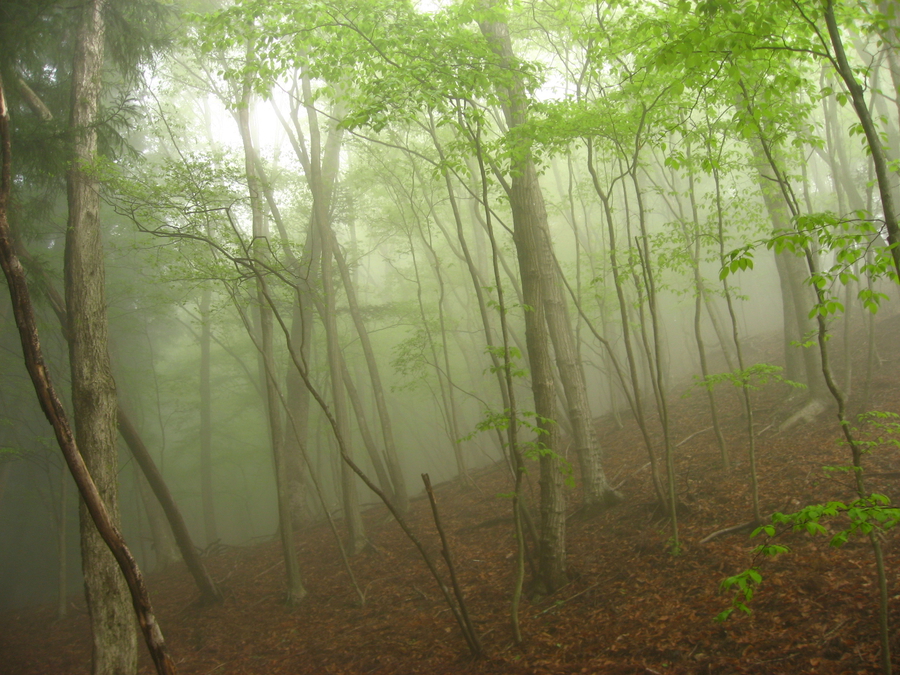
The park as such was established in 1950 and there are at least three different types of areas in it: “Special protection zone”, “Special zone”, and “Ordinary zone” – I guess these are kind of self-explanatory. For a handy map you can visit the site of the Ministry of the Environment, where they also provide helpful highlights of the area and a cute map of the attractions that will delight any child – by age or at heart.
Note: I believe the Japanese government have since increased the park area to include the Kai area in Yamanashi prefecture as well, because I see that it’s referred to everywhere now as the Chichibu-Tama-Kai National Park – except on Google maps, which still lists a couple of locations for the park’s offices as “Chichibu & Tama National Park Office”. Here is the address of one of the park offices in the city of Okutama (奥多摩) that may come in handy if you’d like to stop by and ask them for information.
the trail
We modified an existing suggested trail since we were beginner hikers at the time and were not sure what to expect, and how far we’d be able to walk. The trail we picked started from Owa, via the peak of Kumotori-san, and ended in Okutama. Because the destination of Okutama town is rather accessible from Tokyo (see below for details), we chose to do the trail in reverse – aiming to depart from Okutama, to continue as far as we could (hopefully until we reached at least Kumotori-san), and then – depending on our progress – to either backtrack to Okutama town or continue on to Owa, from where we would return to Tokyo.
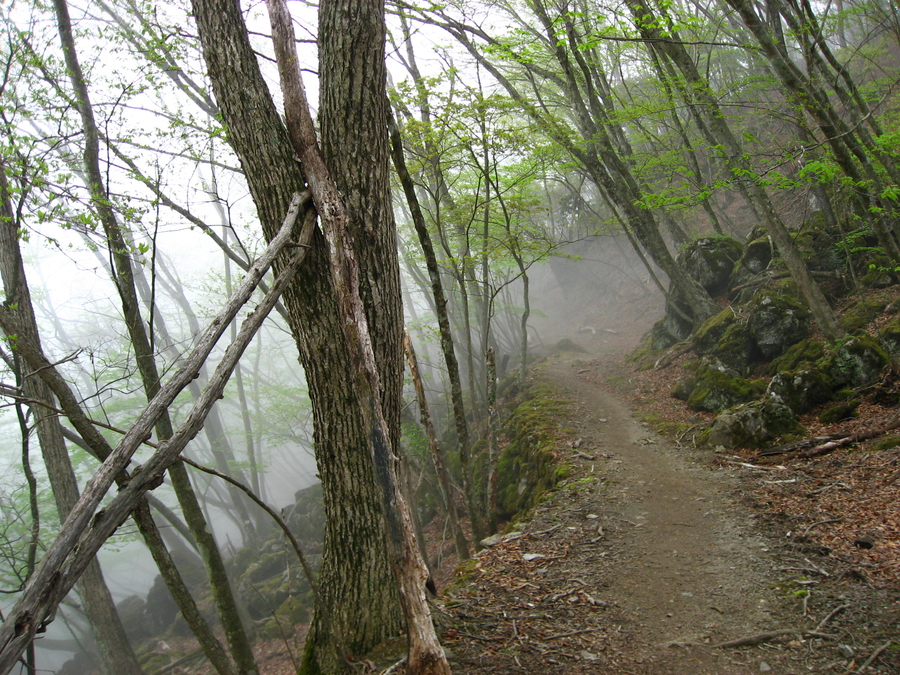
In the Lonely planet guide this trail was recommended as an easy-to-medium difficulty trail that is suitable for family hikes, and it covers about 30 km over 2 days on hiking with 1 overnight. However, since we hiked in the opposite direction, the elevation profile ends up slightly different, so if you follow our steps you may find it more difficult, with a bit of a longer and steeper ascent (the original trail uses the Mitsumine cable car for part of the way up).
In any case, do look at the maps I refer above and pick an itinerary that you like – I hope the details and pictures below would rather give you a feel for the area as a whole, and help you organise your custom hiking trip.
weather in the spring
Despite the generally mild temperate climate in Tokyo, the weather in the mountains nearby is still quite cold in the beginning of May, especially in the evening and at night. As you can tell from the pictures, it can get very humid and misty, which adds to the cold factor a bit too.

Be sure to have plenty of warm clothes, and preferably some way to prepare warm drinks and food too – you’ll have a much nicer time this way!
On the bright side, if you have missed the sakura (cherry) blossoms by a few days, the trees tend to bloom a bit later at higher altitude so you might be able to catch a glimpse of them if you go outside of Tokyo, and high up.
sleeping
There a quite a few huts scattered in the area, including free emergency huts. Camping is allowed near the huts and costs a few hundred yen (dollars) per person, whereas the actual huts can run quite pricey to about 4000-6000 yen (40-60 USD or so) per person for lodging only or lodging and meals correspondingly. The huts also tend to be cramped, at least in the areas around Tokyo, so if you prefer to have a bit more space, camping would be a better option. Camping in other areas, while neither officially legal or illegal, will not generally get you into trouble as long as you use common sense – don’t do anything dangerous for people and the environment, such as lighting fire, and be quiet and polite.
starting from okutama town
For ease of access we chose to approach the park from the final destination instead – the town of Okutama. You can get to Okutama from central western Tokyo, say Shinjuku, in about 2 hours, for about 1000 yen (10 USD) one way – first get on the JR Chuo Line for a half hour ride until Tachikawa, where you transfer to the JR Ome line for the remainder of the journey. Easy as can get! (Tip: you can check connections on the Ekitan website, just use a translating service).

Besides being uncomplicated to reach, Okutama also has a Park Ranger’s office where you can speak to someone if you need more information about the local area and trails (see link above).
ascent and setting up camp
While we headed out on a beautiful sunny day, we had a lot of trouble finding the trail head (being inexperienced hikers AND not knowing the local area at all).
After a couple of hours of staring at maps and phones, and trying to figure out if we were getting any close to where we needed to go, as we were struggling up on a 50 degree slope hoping to emerge on the trail (unknowingly we were taking a steep shortcut!), we met a curious personage. A nimble elderly man, with traditional toe-separated shoe-socks and a headband bobbing down the slope as fast as a rabbit appeared in front of us. He was very kind and helpfully provided us with directions, confirming our hopeful suspicions that we were close to the trail. Many years later, I still can only guess what business he had there but I’m happy we met him, because if not for his assurances, I suspect we might have just given up the hiking enterprise at that point.
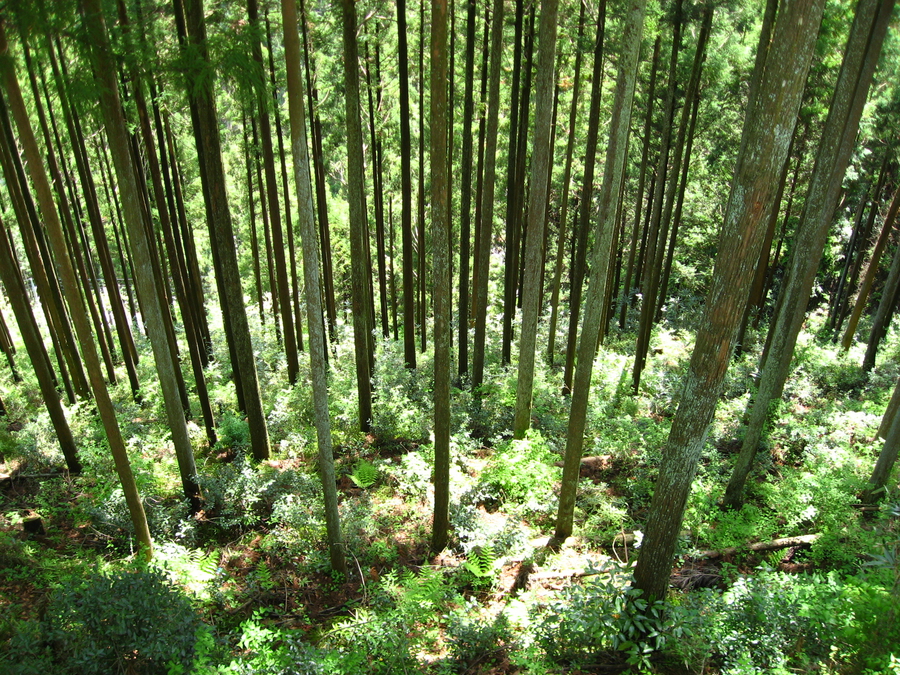
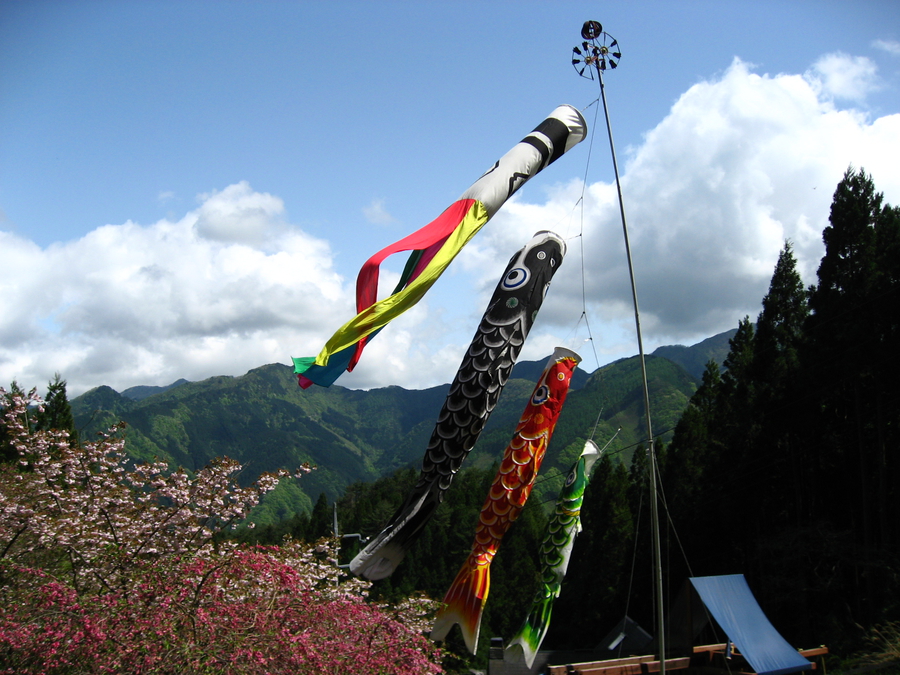


To be honest, I don’t exactly recollect how far we got on this trail. I think after we set up camp and surveyed the area around our camp site to make sure it was ok, we pretty much spend our time cooking dinner and trying to get some sleep. It was pretty cold, and even though we had warm clothes we ended up using our portable fan gas stove.
return to okutama
When we woke up on the next day we decided to leave camp and hike up for a couple of hours or so without backpacks to see what was out there, and to have lunch somewhere along the trail. Our plan was to then come back to the camp, and collect our backpacks to head back down to Okutama. It was pretty much our attempt to save the hike, seeing that we had not progressed much due to being too slow from carrying too much stuff.

Unlike the previous sunny day, that day met us with heavy fog and clouds (which may be typical in the mornings in this season).

At times the trails looked pretty mysterious, like this stretch above where the trail was flanked with a row of scary looking trees with elaborate exposed roots. For the most part, we did not see much vegetation and wildlife, except for just budding out trees and shrubs, and an occasional mushroom and ferns. It was still very beautiful, and much different from the hikes we had much later in other parts of Japan and in Europe.

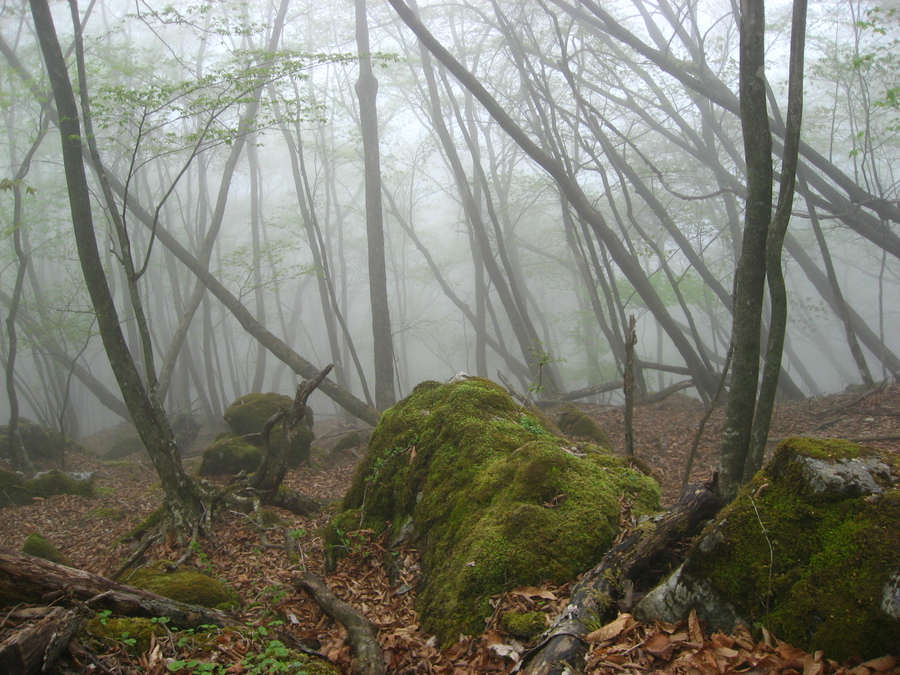
I believe we went as far as a summit of sorts, which must have been Taka-no-su yama. Not much of view unfortunately around noon, as the weather did not cooperate at all.

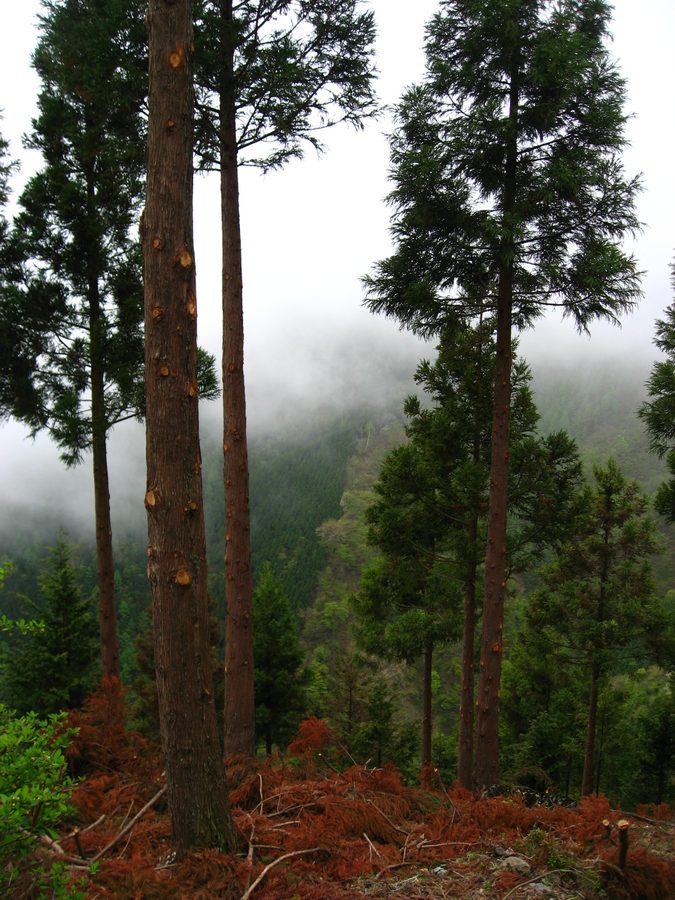


As we came down into Okutama town, it kept quite cloudy and started to drizzle, so we probably chanced upon not the best of weather. If you are luckier, you will probably enjoy much better views, and those tree roots may not look as scary. It’s a huge park with lots to explore, including some caves and gorges, so do give it a try!
Hope you enjoyed this post, and found some useful information or inspiration. If you have any questions, practical or general, as always feel free to leave them in the comments or on social media.
–Silvia
P.S. Sorry about the quality of some of the photos – those were the days!

